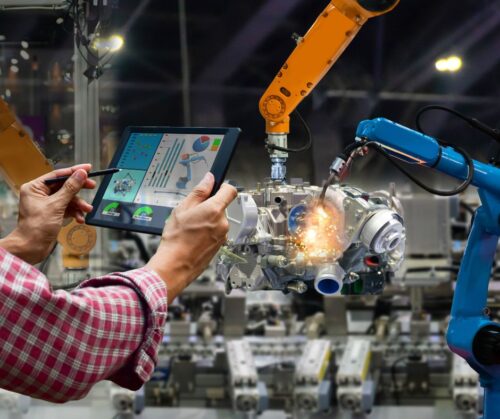If your manufacturing plant has invested in automated equipment, such as robots, you’re not alone. According to the International Federation of Robotics, U.S.-based manufacturers invested in 44,303 robotic units in 2023, up 12% from 2022. Additionally, a 2022 study by Veo Robotics, Inc. revealed that more than 55% of U.S. manufacturers have 10 or more robots in their facilities.
When considering investing in additional automated equipment—or purchasing your first robot—it’s critical to weigh the pros and cons. Automation can sometimes be more expensive and time-consuming than your management team might expect.
The Pros of Automation
1. Addressing Skilled Worker Shortages – Automated equipment helps manufacturers meet production demands, especially in remote areas with limited sources of trained workers.
2. Greater Efficiency and Quality – Robots, if properly programmed and integrated into the surrounding systems, can perform tasks faster, with fewer errors, and less waste than humans. They are particularly well-suited for large production runs and repetitive, dangerous, or labor-intensive tasks such as welding, pick-and-place tasks, and cleaning up chemical spills. For small batches of custom work, skilled employees might be more appropriate.
3. Enhanced Brand Image – Automated production lines and the use of robots can differentiate your business from competitors. Publicizing your investment in automated equipment can boost your brand’s image as an innovator and high-quality producer.
4. Improved Employee Morale – Automating repetitive tasks frees workers to perform high-tech custom work and program robots for future runs. Assigning dangerous or strenuous work to robots can reduce work-related stress, accidents, and health issues. However, morale benefits may be tempered if employees fear job loss due to automation.
The Cons of Automation
1. High Initial Costs – The biggest downside to automation is the initial investment. Many companies finance or lease equipment to spread cash outflows over five to ten years. Financing costs can be high due to current interest rates.
– Consider whether your company qualifies to deduct any or all of the interest expense. Generally, interest paid or accrued by a business is deductible up to 30% of adjusted taxable income. Taxpayers with average gross receipts not exceeding the applicable threshold for the three previous tax years are exempt from the interest deduction limitation. For 2024, the threshold is $30 million, up from $29 million in 2023.
2. Training and Incremental Costs – Training employees to operate, program, and repair the equipment incurs additional costs, along with incremental insurance, utilities, and repair costs. You might also need to revise your production line to avoid bottlenecks as throughput, cycle times, and setup times change with automation.
3. Maintenance and Downtime – Machines, though reliable, can break down and wear out, necessitating a formal maintenance program. If following a maintenance schedule could be a challenge, consider leasing equipment from a company that also maintains it.
4. Cybersecurity Risks – Automation brings potential cyberthreats. Evaluate whether your robots could be hacked or infected with a virus that shuts down your production line.
Talk to Your Advisor
Whether you’re adding your first robot or your 100th to your production floor, proper planning is critical to successful automation. Contact us to help determine the costs and whether the investment makes sense for your manufacturing company.
© 2024







